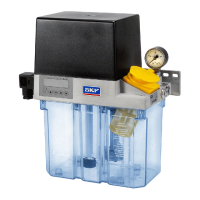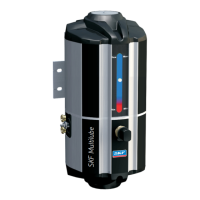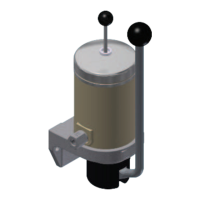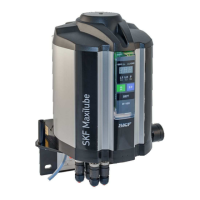24
5. Delivery, returns, storage
5.1 Delivery
After receipt of the shipment, it must be inspected for any
shipping damage and for completeness according to the
shipping documents. Immediately inform the transport carrier
of any shipping damage. The packaging material must be
preserved until any discrepancies are resolved.
5.2 Return shipment
Before return shipment, all contaminated parts must be
cleaned. If this is not possible or practical, e.g. if it would impede
fault detection in the case of complaints, the medium used must
always be specified. In the case of products contaminated with
hazardous substances as defined by GHS or CLP regulations,
the safety data sheet (SDS) must be sent with the product and
the packaging must be labelled in accordance with GHS/CLP.
There are no restrictions for land, air, or sea transport. The
choice of packaging should be based on the specific product and
the stresses to be expected during transport (e.g., necessary
anti-corrosion measures in the case of shipment by sea). In the
case of wooden packaging, the applicable import regulations
and the IPPC standards must be observed. Required certificates
must be included in the shipping documents. The following
information, as a minimum, must be marked on the packaging
of return shipments.
Marking of return shipments
5.3 Storage
The following conditions apply to storage:
• Dry, low-dust, vibration-free, in closed rooms
• No corrosive, aggressive substances at the storage location
(e.g., UV rays, ozone)
• Protected against animals (insects, rodents)
• If possible, keep in the original product packaging
• Protected from nearby sources of heat or cold
• In the case of large temperature fluctuations or high humidity,
take appropriate measures (e.g., heating) to prevent the
condensation of water
• Before usage, check products for damage that may have
occurred during storage. This applies in particular to parts
made of plastic (due to embrittlement).
5.4 Storage temperature range
For parts not filled with lubricant, the permitted storage
temperature is the same as the permitted ambient temperature
range (see “Technical data”).
5.5 Storage conditions for products filled
with lubricant
For products filled with lubricant, the permitted storage
temperature range is:
If the storage temperature range is not maintained, the
following steps for replacing the lubricant may not lead to the
desired result under certain circumstances.
5.5.1 Storage period up to 6 months
Filled products can be used without implementing additional
measures.
5.5.2 Storage period between 6 and 18
months
Pump:
• Connect the pump to a power source
• Switch on the pump and run it until lubricant comes out of
every outlet without air bubbles
• Disconnect the pump from the power source
• Remove and dispose of the lubricant that came out
Lines:
• Remove pre-installed lines
• Ensure that both ends of the line are open
• Fill the lines completely with fresh lubricant
Metering devices:
Due to the large number of different metering devices, no
universally valid statement can be made regarding the
removal of the old lubricant and correct bleeding after filling
with new lubricant. The instructions can be found in the
technical documentation
of the specific metering device
5.5.3 Storage period more than 18 months
To prevent faults, the manufacturer should be consulted before
start-up. The basic procedure for removal of the old lubrication
filling corresponds to that for storage periods between 6 and
18 months.

